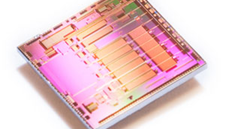Carry a Chip in your Heart
on

Imec recently demonstrated a low-power intracardiac chip designed to detect ventricular fibrillation. Billed as a major step toward next-generation cardiac resynchronization therapy solutions, the new chip features innovative signal processing functions and consumes only 20 µW with all channels active.
Robust and accurate heart rate monitoring of the right and left ventricles and the right atrium is essential for implantable devices used in cardiac resynchronization therapy, and accurate motion sensor and thoracic impedance measurements to analyze intrathoracic fluid are critical for improving clinical research and analysis of intracardiac rhythm. Extremely low power consumption is also necessary to reduce the size of cardiac implants and improve the patient’s quality of life.
Imec’s new integrated circuit has three power-efficient intracardiac signal readout channels. Each of the three electrocardiogram (ECG) channels is equipped with precision signal conditioning circuitry with very low power consumption and an analog signal processor to extract the features of the ECG signal for detection of ventricular fibrillation. The feature extractor achieves a latency of just 2 ms to facilitate responsive cardiac resynchronization therapy.
Additional features improve the functionality of cardiac resynchronization therapy devices. A low-power accelerometer readout channel enables rate adaptive pacing, and a 16-level digital sinusoidal current generator supports bio-impedance measurement with a dynamic range of 82 dB from 0.1 to 4.4 kΩ, with 35 mΩ resolution and accuracy better than 97%.



Discussion (0 comments)